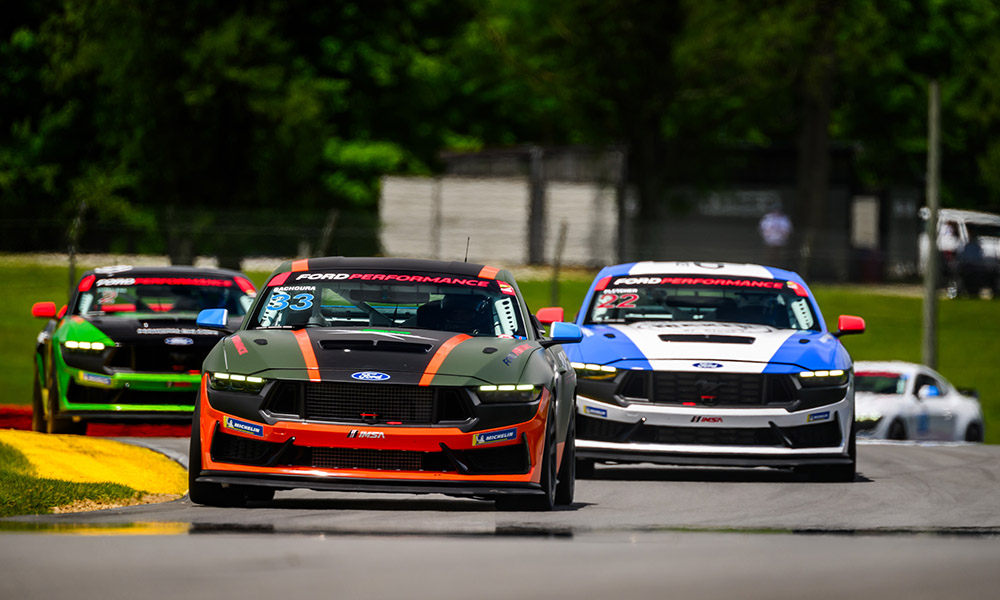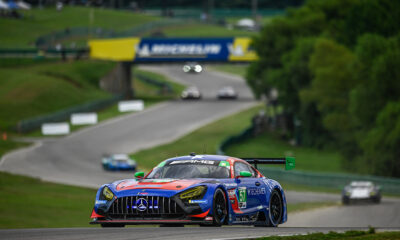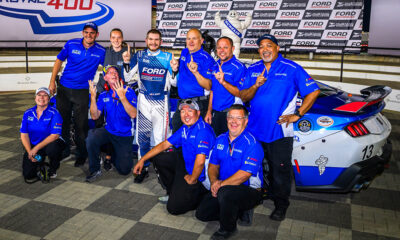
Photo: Ford
Mustang Challenge series director Glenn Long says the new single-make series’ sprint format was ultimately the most cost effective option for both teams and drivers and that it was Ford Performance’s “intent” to utilize it when designing the series.
The Blue Oval’s spec series will feature a five race-weekend calendar, with each event culminating in a pair of single-driver 45-minute sprint races with no mandatory pit stops.
“Having the most reasonable entry point possible from a cost perspective seems to make the most sense for a first series,” Long told Sportscar365.
“So the intent was to have a single-make series that follows a sprint format. That way it is more cost-effective for the teams and ultimately for the drivers.
“There are lots of options out there at various price points, and I think the more price competitive you can be, the more attractive the series is.”
Long also noted that the length of the sprint races was also a factor when designing Ford Performance’s entry level series, given some of the costs associated with pit stops.
“At this series level and with a 45-minute sprint race format, if you split that in half it becomes very, very short,” he said.
“Longer stints start to require more effort on the crews and teams, because after 50 minutes, or an hour, you need to refuel and that adds significant costs to the entire program.”
Cost wasn’t the only factor in the Mustang Challenge format, however.
Long felt that drivers have the opportunity to learn and showcase skills across a single stint in their Ford Mustang Dark Horse R race cars that they will need in higher levels of sports car racing later in their careers.
“I think that we’ll see drivers learning how to maintain their tires within the 45-minute window,” Long said.
“They’ll have run the car so that way they’ll have a car underneath them by the end of the stint.
“There are no scheduled pit stops in this format, which will really help the drivers with tire and vehicle management.
“It’s a long enough race so that qualifying is important but not essential. You’ll have enough time to move through the field.
“The aspect of where you start and finish is going to make this very exciting.”
Despite there being two races per weekend, the series features a single 15-minute qualifying session to set the grid for Race 1, with the Race 2 starting order determined by the fastest lap times set in the opening race.
“It saves some wear-and-tear on the vehicles by not having to have multiple qualifying sessions,” said Long.
“Again, it kind of comes back to cost. Multiple qualifying sessions require multiple sets of tires.”
“I think that the sprint format fits very well with the whole concept.”

























